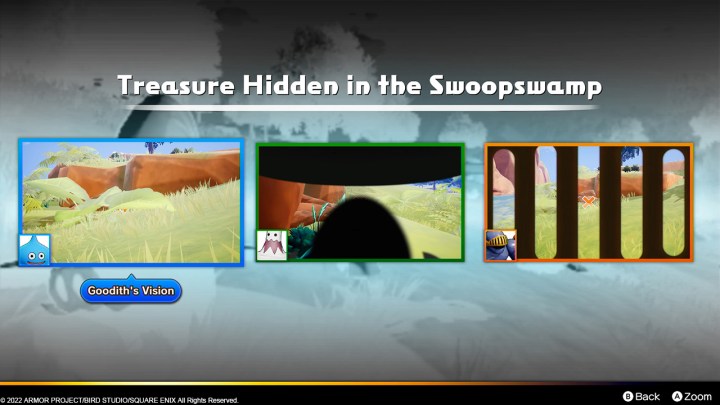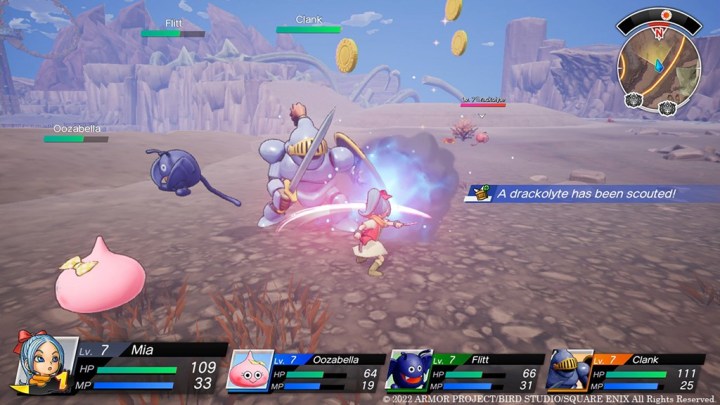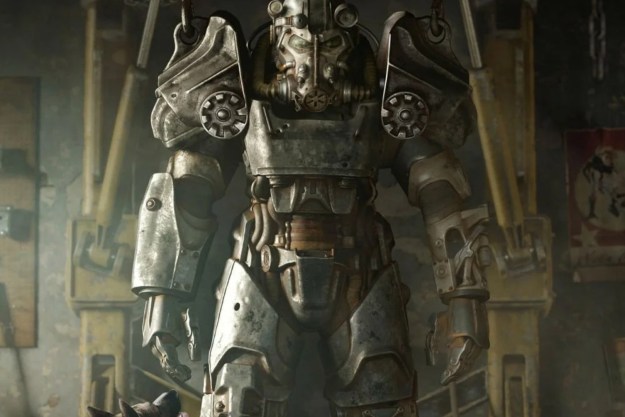RPGs aren’t always the most kid-friendly experience. They can be filled with complicated combat systems, massive difficulty spikes, and long run-times that can make them feel insurmountably long. While series like Pokémon cracked the code, making the genre more approachable for players of all ages, most young children aren’t likely to pick up something like Tales of Arise.
Dragon Quest Treasures tries to solve that problem. The upcoming Nintendo Switch exclusive takes the colorful world of Dragon Quest XI and places it in a chilled-out game built for both kids and those who find 100-hour RPGs a little too demanding. After demoing the first hour of the game, I can see how it could make for a great stepping stone into the Dragon Quest IP for younger players. Its slow pace and simplified systems may leave long-term fans yearning for a deeper RPG, but it might be the perfect game for long-time fans to share with their kids.
A world full of treasure
Dragon Quest Treasures acts as a sort of prequel to Dragon Quest XI, starring Mia and Erik in their younger days. The opening scene of their adventure plays like a childhood fantasy, complete with pirate skeletons. It’s a bit like if you turned Dragon Quest into a Netflix cartoon, turning its monsters into adorable sidekicks.
It’s a bit slow to get going, and that’s where you can really feel who the game was built for. Early on, I’m taught basic actions like crouching and using my slingshot to solve little environmental puzzles in between long text box conversations. As someone who hasn’t been following the game closely, I wasn’t even sure if it was an RPG with battles and leveling up for a good 20 minutes.

Before it gets to any of those hooks, it introduces the “Treasures” part of its title. As soon as I’m dropped into the world, I come across a locked gate. I’ll need to find a key to open it and I’m given a clue as to where it is: a photo of some lily pads. My first task is to find where that photo was taken to unearth the key. It’s a simple exploration puzzle that I imagine a very young child could figure out, especially with a parent controlling the action. I’m not sure how complex that system will get as the world expands, but that treasure-hunting aspect could make for a fun, relaxed exploration hook depending on how widely the game opens up.
I would eventually get to the more traditional RPG hooks, though the bits I played were very streamlined. Combat works in an action-RPG fashion, with players controlling their hero who can slash enemies with one button or shoot pebbles at them with a slingshot. Characters travel around with a party of monsters, like slimes, who auto-attack when an enemy comes into range. My early battles were easy to manage as a result. I could hang back and let my monsters do the work, poking in to get some shots on my enemy while it was preoccupied.
It’s another decision that makes this game theoretically easy for a kid to pick up, though adults might struggle with the overall feel. The pace of battle is quite slow, with slashes feeling a little sluggish. I found that the one-button attack system got repetitive quickly, leaving me a little unengaged during the demo’s first boss fight. I’m hoping that’s more due to how early in the game I was rather than being indicative of the whole combat system.

I’m ultimately more interested to see where the treasure-hunting gameplay goes, as I only got a taste of that. Toward the back half of the demo, I learn that my monster pals have specific abilities that let me traverse the world. For instance, one allows me to bounce in the air, letting me reach high up cliffs. I imagine that could open the world for some more free-form exploration that opens the door for unexpected discoveries, ala The Legend of Zelda: Breath of the Wild.
Dragon Quest Treasures certainly seems like it’s accomplishing what it sets out to do. It’s an endearing little cartoon that combines easy-to-understand treasure hunting with streamlined RPG combat. It reminds me a bit of the Monster Hunter Stories series, which strips the complicated systems of Monster Hunter into a more easily legible game of rock/paper/scissors. And though I hope to see a little more complexity to its battles in the full release, I imagine it’ll be a fun way for parents to pass their love of Dragon Quest down to their kids.
Dragon Quest Treasures launches on December 9 for Nintendo Switch.
Editors' Recommendations
- Follow up Final Fantasy XVI with these 6 Square Enix game deals this Prime Day
- We finally know what Dragon Quest Treasures is and when its launching
- For classic RPGs, what’s old is new in 2022
- Dragon Quest XII and 5 more games announced at franchise’s anniversary stream
- Dragon Quest Walk is a new location-based mobile AR game similar to Pokémon Go




